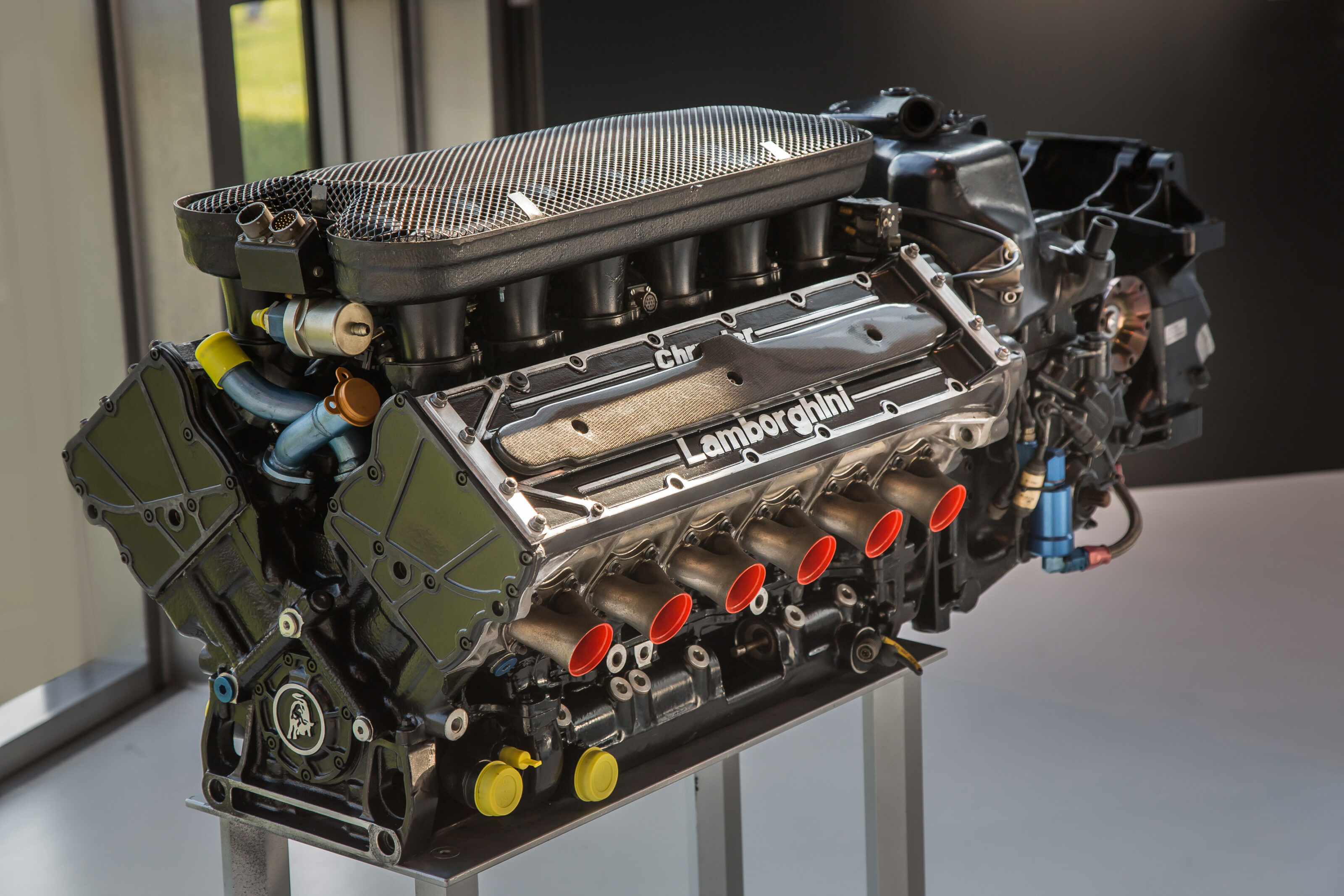For a brief period of time, McLaren was considering putting a Lamborghini V12 into one of its iconic race cars.
In the ‘90s, McLaren was synonymous with Honda in Formula 1, and it paired with BMW for the F1 road car (though that was very nearly a collaboration with Isuzu).
However, the idea of the two powerhouses of Woking and Sant’Agata coming together seems almost surreal.
But, it very nearly happened in 1994.
For several years Lamborghini had supplied engines to a number of mid-field F1 teams to little success.
By 1993 Lamborghini was ready to pull out of the sport altogether, until a handshake deal was struck between Bob Lutz – the head of Lambo’s parent company Chrysler – and McLaren’s notoriously iron-fisted leader Ron Dennis to see if the two companies could join forces.
An all-white MP4/8 was fitted with the Italian V12 for factory McLaren drivers Ayrton Senna and Mika Hakkinen to drive.
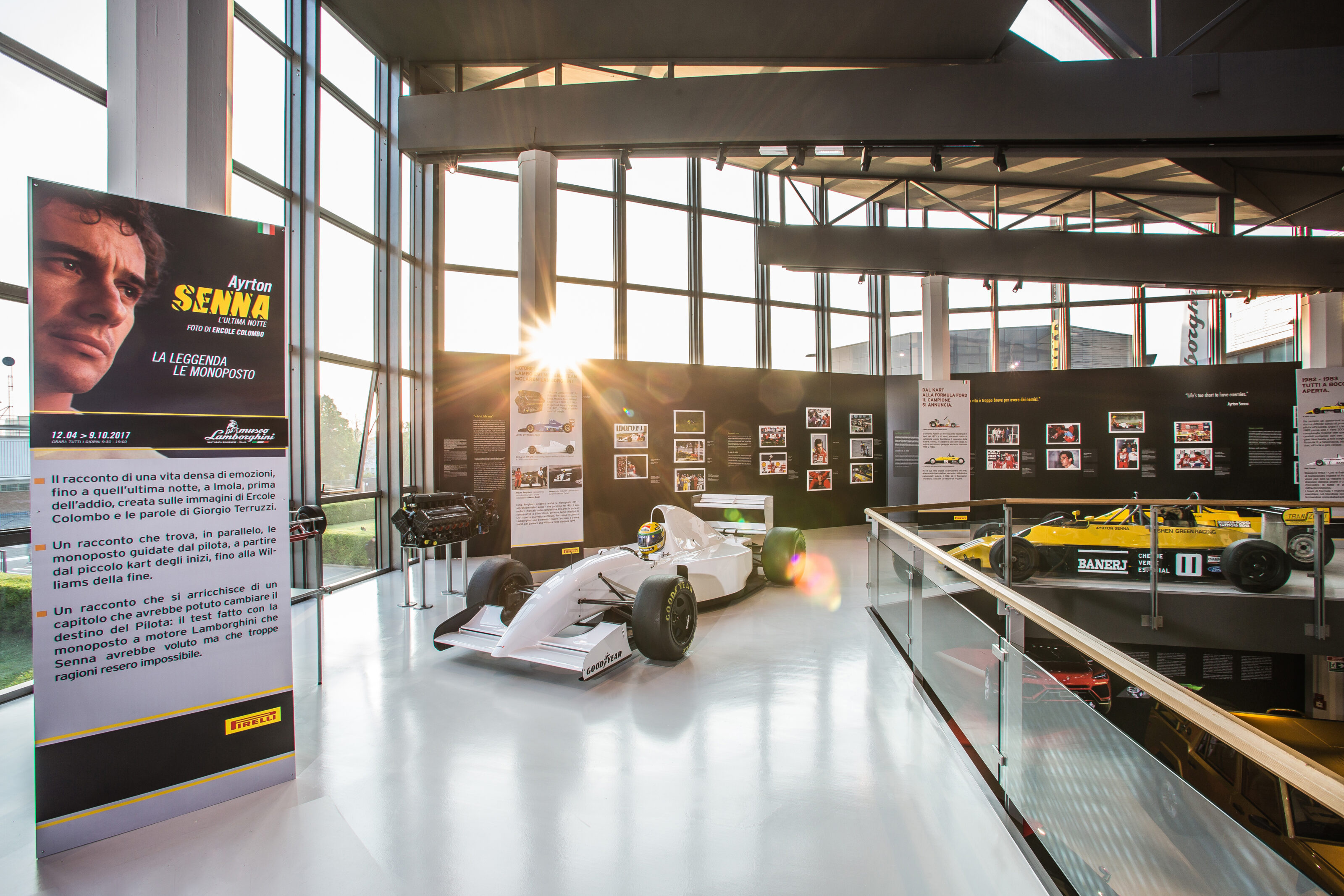
The engine, codenamed LE3512, was a 3.5-litre naturally aspirated V12 designed and built by former Ferrari designer and engineer Mauro Forghieri. It sounded fantastic, but results were hit and miss at best.
Test engines were badged as Chrysler, while the cars that did race with the unit were labelled with “Chrysler powered by Lamborghini”.
When the Lamborghini V12 was first introduced to F1 in 1989 it was reported to be producing 447kW. By the time McLaren completed its test of the engine in ’93, power was said to be in the region of 559kW.
But, as is typical of certain engines from that era of F1, all that power comes with a high risk of complete engine failure.

Supercars’ head of motorsport Adrian Burgess worked for McLaren at the time, and recently spoke with the V8 Sleuth about his time spinning spanners on the Italian-British hybrid racer.
“I was on the test team then; we had the Ford DFV wire-spring, basically a customer engine, we were paying for our engines and Benetton had the air valve which was the latest spec engine, they were the factory team,” Burgess recalls to the V8 Sleuth.
“I think they won one race with Michael and we won five with Ayrton.
“Myself, and two other mechanics were the only ones to actually work on that [Lamborghini-powered] car. All of the Lambo testing was our car crew. We went to Pembrey, then we went to Silverstone, then we took it to Estoril.”
During testing McLaren boss Ron Dennis set Burgess and his teammates an ambitious benchmark, which they came close to achieving.
“I remember going to Estoril in Portugal the day after the Grand Prix. Ayrton loved it, he thought [the engine] was great. And coupled with that chassis – our chassis at the time, we were just catching up with Williams with the active – we’d made some really good strides. The car was quick.
“We turned up at Estoril and I think Ron said to the team: “If you’re 5 seconds quicker than the Larrousse with the same engine, then we’ll consider it.”
“We went out and did a qualifying run and were like 4.9 seconds quicker – within half a day we were 4.9 seconds quicker than the Larrousse was two days earlier at the Grand Prix with the same engine.”
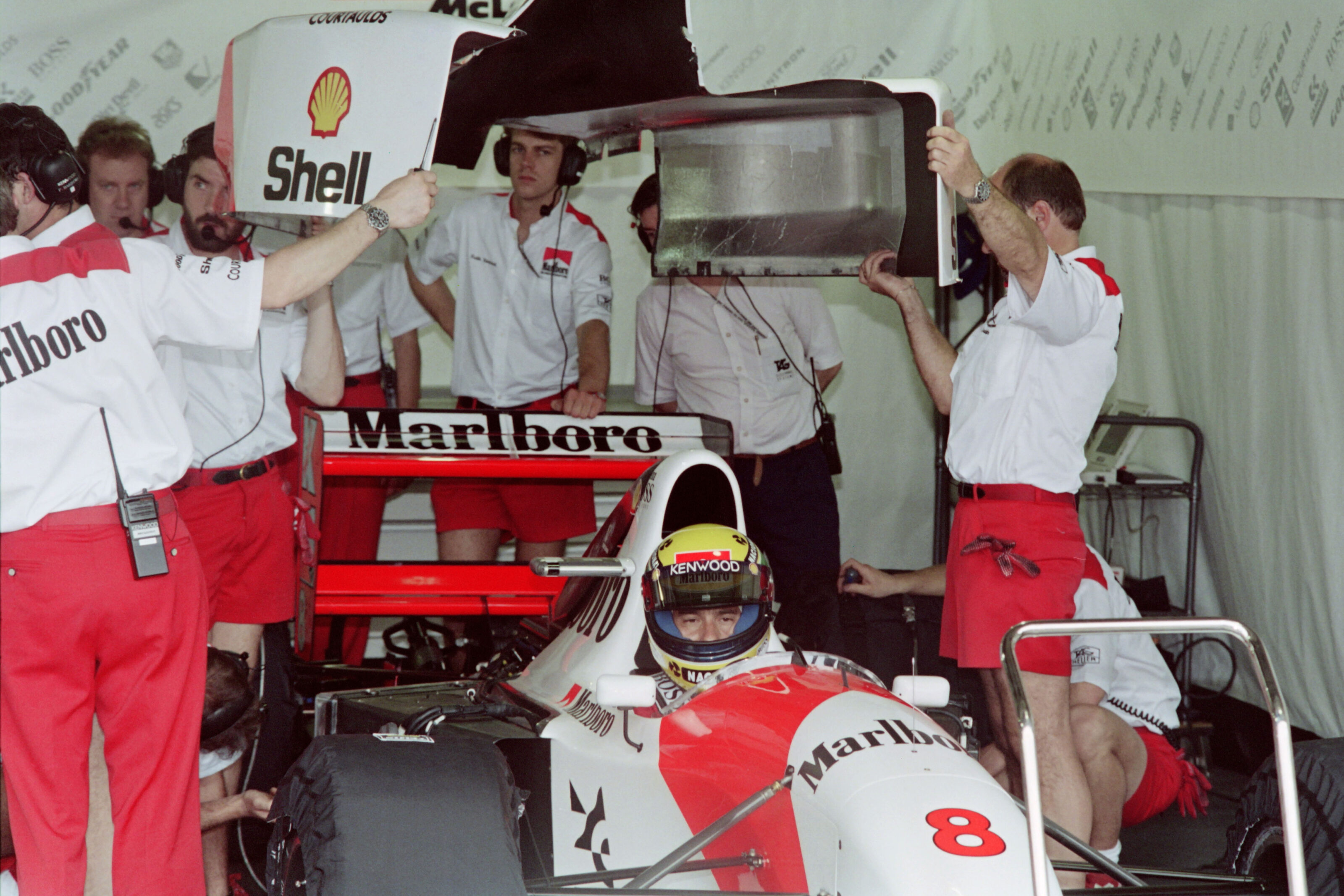
Despite being able to make the Lamborghini V12 fast, the McLaren mechanics couldn’t stop it from detonating in spectacular fashion.
“The problem with the engine was that by the time it was warm it normally had handgrenaded itself,” Burgess laughs.
“I think the furthest we went was 19 laps before all of a sudden you could look down through the inlet trumpets and actually see out the bottom! It handgrenaded itself in the most magnificent ways. It was like a Scalextric car dragging con-rods down the front straight at Estoril. The thing just blew up.”
Despite the constant critical mechanical failures, Burgess recalls his time working on the Lamborghini-powered McLaren fondly.
“I’ve got so many good memories about that car; we were so good at doing engine changes on the thing because they were so unreliable,” he recalls.
“We actually did one, from rolling it into the garage to driving it back out the garage, 26 minutes was our best!
“It was such a big engine, everything was spread out, it was actually fairly quick and easy to change. Unfortunately you just changed them quite a lot because they were so unreliable.”
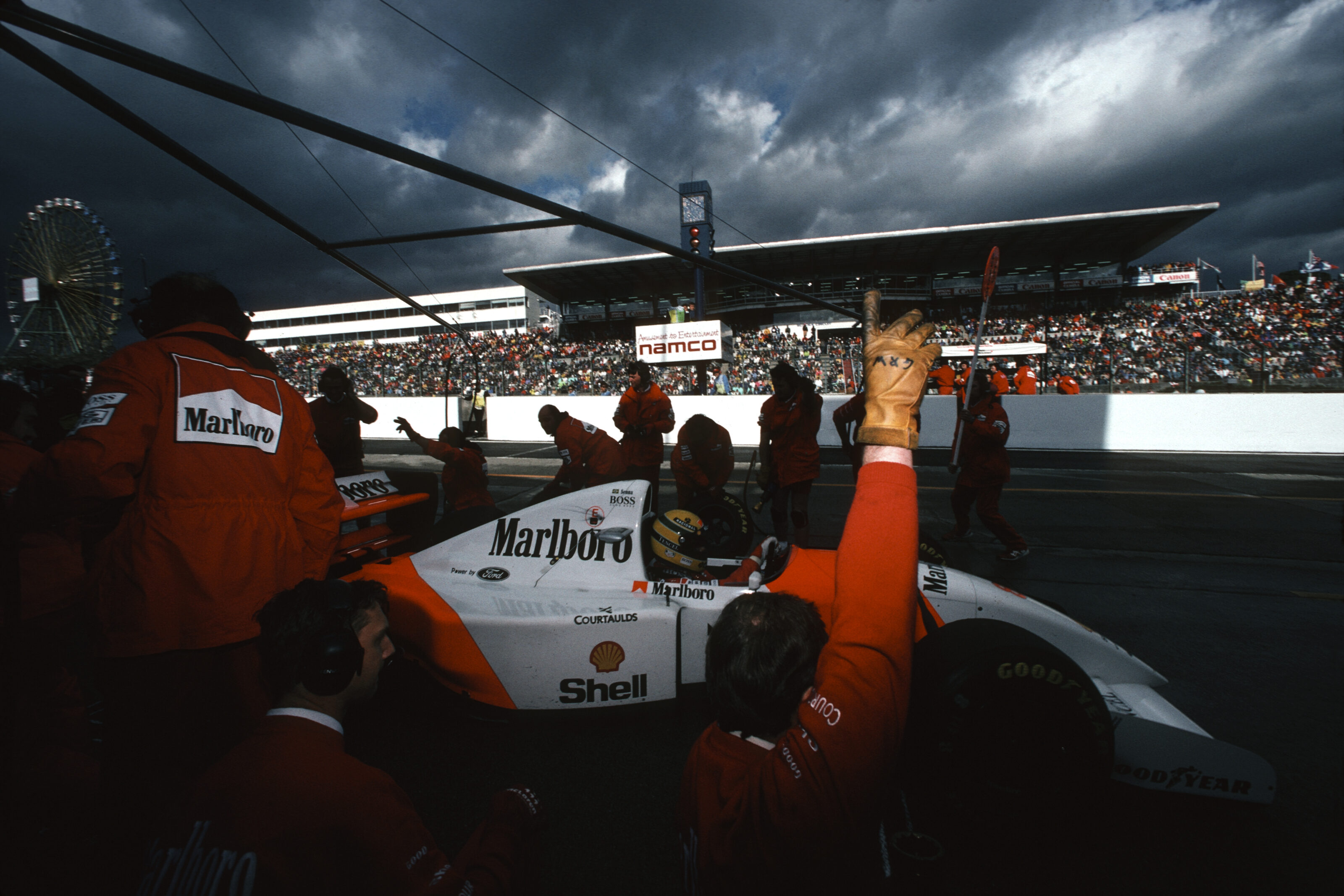
McLaren was using a 507kW Ford V8 engine in 1993. Despite Ayrton Senna wanting to run the Lamborghini V12 as early as the Japanese Grand Prix that same year (an event he would win using the Ford engine), Dennis instead signed Peugeot on as the engine supplier for ’94.
As a result, Senna signed with Williams, who was set to use a 3.5-litre Renault V10 in its FW16.
“Ayrton wanted [the Lamborghini] and I think if we’d taken the engine he’d have stayed with us. He knew the engine was our weakness and we needed a good engine partner. He wanted to take that car to Japan and Adelaide – which ended up being his last two races with McLaren, and ironically he won both those races for us with the Ford,” Burgess explains.
“At the end of the day it came down to Chrysler putting in the money to develop the engine and making it reliable. Ron couldn’t get a deal over the line with those guys and we ended up going with Peugeot.”
With no McLaren deal, that would sign the death warrant for LE3512. History tells us that the Lamborghini engine was one of only five V12 engines used in the naturally aspirated era from 1989–2013.
We recommend
-
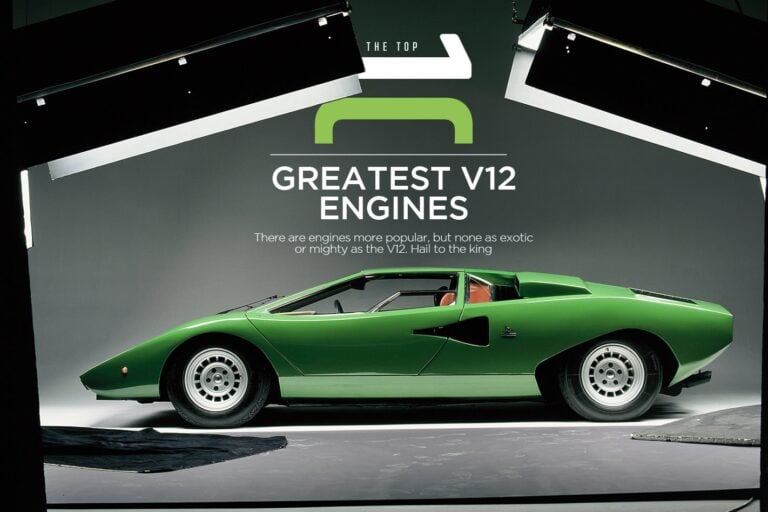 Features
FeaturesThe top 10 greatest V12 engines
There are engines more popular, but none as exotic or mighty as the V12. Hail to the king
-
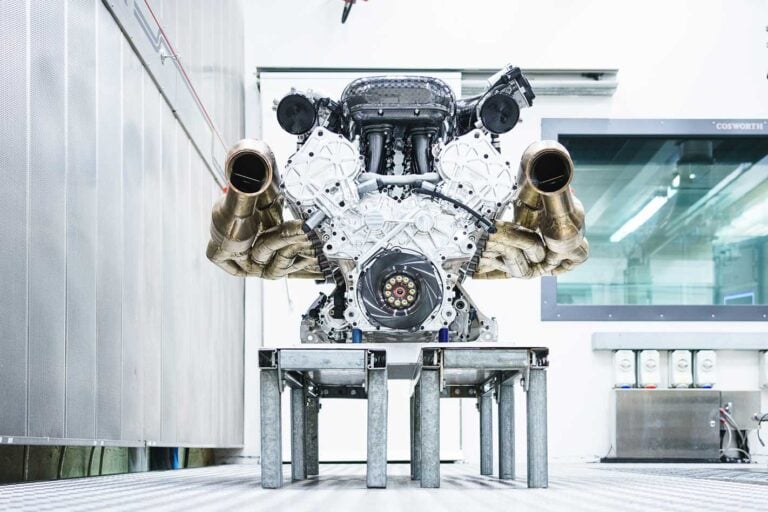 Features
FeaturesAston Martin Valkyrie's V12 detailed: Geek Speak
Who does Aston Martin and an F1 team call to help build a groundbreaking V12 engine? Cosworth, of course
-
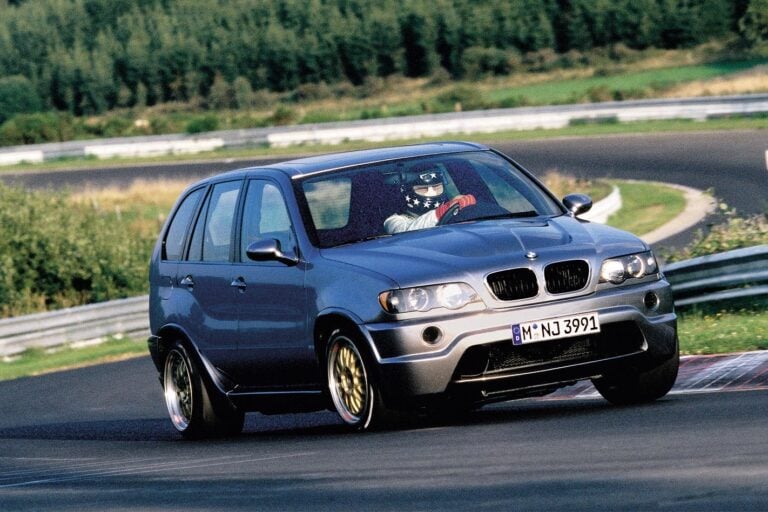 Features
FeaturesMeet the BMW X5 LeMans V12
When BMW won Le Mans in ’99, it celebrated in exuberant fashion


